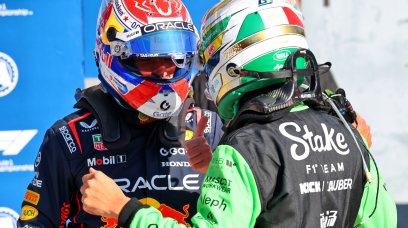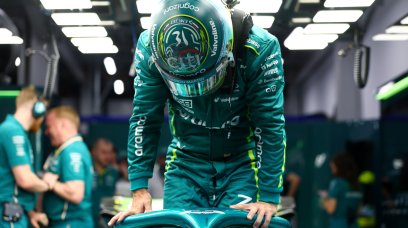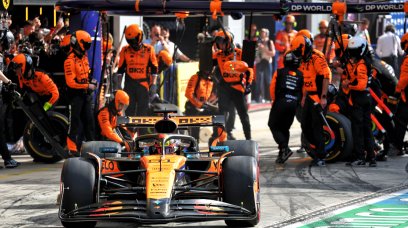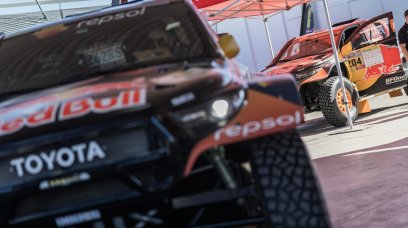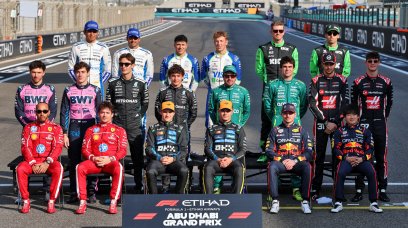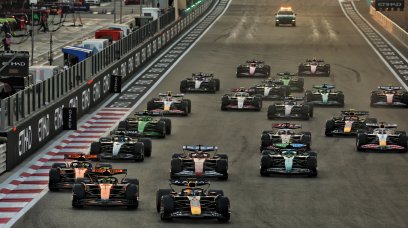The new cars launches will begin in just under a month, with all the teams currently engaged in the assembly and production phase of the various components. The work, in this sense, is even more feverish in the engine departments where the power units are assembled, with most teams performing the first "fire up". In other words, the ignition of the engine mounted on the bare body of the 2023 chassis, along with the cooling system that will accompany it for the whole season. As we know, the 2023 power units are in the second year of the four-year 'engine freeze' period which will end at the end of 2025, but development has not been frozen. In practice, at the internal combustion engine level, the parts must reflect the homologation that took place at the beginning of last season, while for the electrical parts the homologation dates back to last September. Basically, until the end of 2025, developments aimed at increasing performance are not allowed, and the maximum power of the electrical components is fixed by the regulation. At first glance it would seem a bomb-proof regulatory system, where the loopholes and convenient interpretations of the manufacturers are practically impossible to implement. But in reality this is not quite the case, as the implementation of modifications aimed at increasing the reliability of the engine, without a direct performance purpose, is permitted. It is, in fact, what we have mentioned several times with regard to Ferrari, whose power unit 066/7 had highlighted serious reliability problems especially with the turbocharger and the MGU-H, problems which it seems were induced by an imperfect operation of the TJI (Turbulent Jet Ignition) system, implemented under the supervision of Rolf Zimmermann. Once the causes have been ascertained, as we already wrote at the end of 2022, it seems that the increase in power, compared to the figures during the course of the last season, would be close to 30 bhp. If this leap forward seems to be a record, we can say it has not been isolated.
The breakthroughs from Mercedes and Honda
Their rivals, specifically Mercedes and Honda, whose power units had not revealed reliability issues comparable to those of Ferrari in 2022 (and therefore not voluntarily reducing their power output), from rumours from across the Channel, seem to have in any case achieved tangible improvements, always acting on parameters related to reliability. At Brixworth, in the engine department, the interventions would have concentrated on the reduction of internal mechanical friction. This would be achieved through machining processes on the main bearings and on the crankshaft as well as on the connecting rods. Furthermore, a new formulation of lubricants would have made it more possible to achieve the goal of reducing "friction". A new Petronas fuel, on the other hand, would be the one that would have allowed a tangible improvement in combustion efficiency. The horsepower gain would be around 16 bhp. The road followed by Honda is interesting. In particular, without being able to modify the project, since they were already homologated, the MGU-H and the MGU-K were analysed, with modifications that were aimed only at reliability, but also, according to our sources, proved to be extremely positive in terms of reducing energy wastage. Equally interesting is the modification of the auxiliary pumps of the internal combustion engine, where the qualitative improvements of some internal components have improved reliability. Adding up the two breakthroughs, there is around a 10 bhp increase.
Will teams break 'the spirit of the regulations'?
These increases are known, unofficially, to the entire technical microcosm of Formula 1. In fact, the manufacturers, in respect of the technical freezing of the power units, make note of other supplier's upgrades to prevent anyone from gaining competitive advantages through a circumvention of the rules. Recently, it was Alpine who expressed perplexity about the perceived performance improvements of the rival PUs, obtained only with reliability-related interventions. The French supplier, who do not provide power units to other teams, have an advantage in terms of production management, but at the cost of having less on-track data to use. Alpine engineers, in fact, claim that they have requested and made changes to some components of the power unit, such as the water pump, but that they have not obtained any increase in performance, remaining faithful to the spirit of the rules. So, even before testing begins, is F1 at risk of a power unit controversy? We'll see...
Most read

